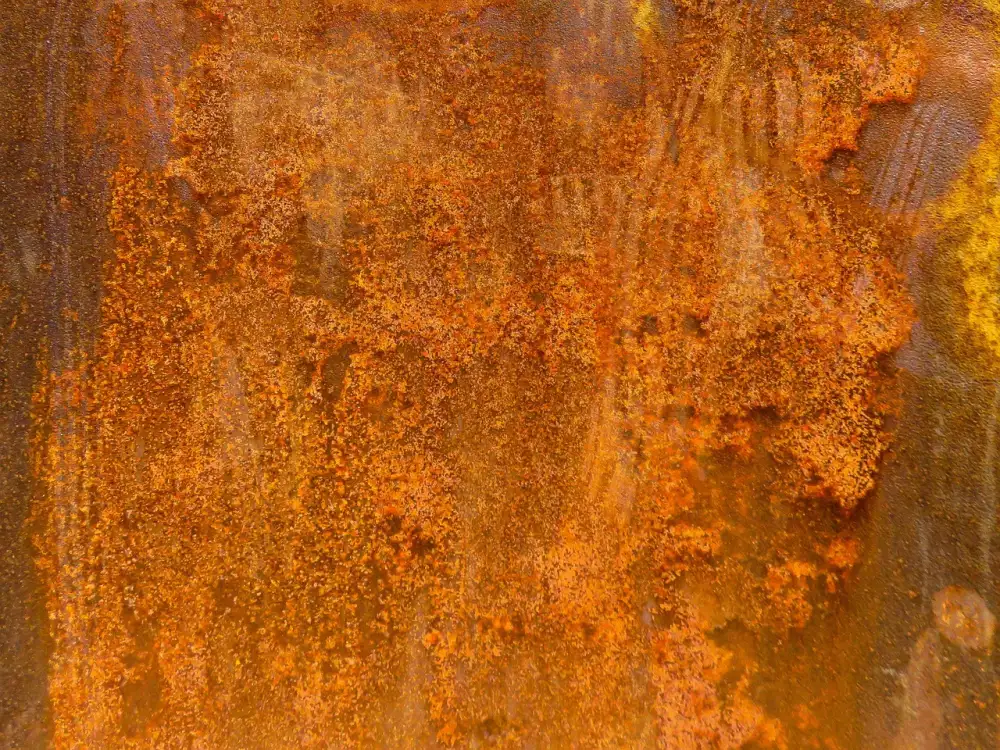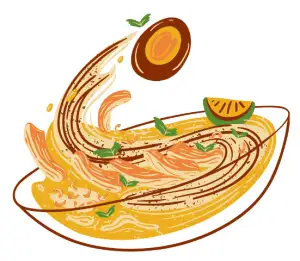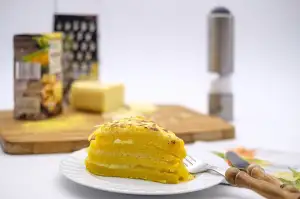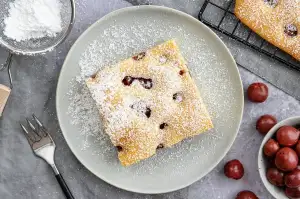Restore the Shine: A Step-by-Step Guide on How to Clean a Rusty Cast Iron Skillet

- Gather the necessary supplies for cleaning
- Preparing the skillet for cleaning
- Method 1: Using salt and oil to remove rust
- Method 2: Using vinegar and baking soda to remove rust
- Method 3: Using a potato and dish soap to remove rust
- Scrubbing and rinsing the skillet
- Drying and seasoning the skillet
- Tips for preventing rust in the future
A cast iron skillet is a beloved kitchen tool that can last for generations if properly cared for. However, over time, these skillets can develop rust, which not only affects their appearance but also their performance. Cleaning a rusty cast iron skillet is essential to restore its shine and ensure it remains a reliable cooking companion. In this step-by-step guide, we will explore various methods to effectively remove rust and provide tips on preventing future rusting. So let's roll up our sleeves and bring back the luster to your cast iron skillet!
Gather the necessary supplies for cleaning
To clean a rusty cast iron skillet, you will need a few essential supplies. First and foremost, you will need a sturdy scrub brush or sponge to remove the rust. Additionally, gather some coarse salt, vegetable oil or any other cooking oil, white vinegar, baking soda, a potato, and dish soap. These items will be crucial in restoring the shine to your beloved cast iron skillet.
Preparing the skillet for cleaning
Before diving into the cleaning process, it's important to properly prepare your rusty cast iron skillet. Start by removing any loose rust or debris from the surface using a stiff brush or steel wool. Be gentle yet thorough to ensure all loose particles are removed. Next, rinse the skillet under warm water to remove any remaining dirt or dust. Once rinsed, dry the skillet thoroughly with a clean towel to prevent further rusting. With these simple steps, you're now ready to begin restoring your beloved cast iron skillet back to its former glory.
Method 1: Using salt and oil to remove rust
To begin the process of restoring your rusty cast iron skillet, you can use a simple combination of salt and oil. First, sprinkle a generous amount of coarse salt onto the surface of the skillet. Then, using a paper towel or a clean cloth, rub the salt into the rusted areas. The abrasive texture of the salt will help loosen and remove the rust.
Next, pour a small amount of vegetable oil onto the skillet. With a clean cloth or paper towel, rub the oil into the rusted areas, making sure to cover all surfaces. The oil will help further break down any remaining rust and create a protective barrier on the skillet.
Leave the salt and oil mixture on the skillet for about an hour to allow it to work its magic. During this time, you can gently scrub any stubborn rust spots with a soft brush or sponge.
Afterward, rinse off the skillet under warm running water to remove any residue. Be sure to thoroughly dry it with a clean towel to prevent moisture from causing future rusting.
By using this method, you will effectively remove rust from your cast iron skillet while also conditioning it with oil for improved seasoning.
Method 2: Using vinegar and baking soda to remove rust
Another effective method for removing rust from a cast iron skillet is by using vinegar and baking soda. Here's how you can do it:
1. Fill a sink or basin with equal parts water and white vinegar.
2. Submerge the rusty skillet in the solution and let it soak for at least one hour, or overnight for severe rust.
3. After soaking, remove the skillet from the solution and sprinkle baking soda all over the rusted areas.
4. Use a scrub brush or sponge to gently scrub the baking soda into the rusted spots, applying some pressure if needed.
5. Rinse the skillet thoroughly with warm water to remove any residue.
6. Dry the skillet completely using a clean towel or by placing it on low heat on your stovetop.
7. Once dry, apply a thin layer of vegetable oil to the entire surface of the skillet, including both sides.
8. Place the skillet in a preheated oven at 350°F (175°C) for one hour to allow the oil to penetrate and create a protective layer.
Using vinegar and baking soda is an excellent natural method that effectively removes rust while being gentle on your cast iron skillet.
Method 3: Using a potato and dish soap to remove rust
Another effective method for removing rust from a cast iron skillet is using a simple household ingredient - a potato. Yes, you read that right! The natural acidity of the potato combined with dish soap can work wonders in restoring your skillet's shine.
First, cut a raw potato in half. Then, pour some dish soap onto the rusty areas of the skillet. Take one half of the potato and dip it into some coarse salt. Use this salted side to scrub the rusted spots vigorously.
The combination of the potato's acid and the abrasive action of the salt will help break down and lift off the rust. Continue scrubbing until you see improvements in the skillet's appearance.
Once you've covered all the rusty areas, rinse the skillet thoroughly with warm water to remove any residue. You may need to use a brush or sponge to get rid of any stubborn rust particles.
Remember to dry your skillet completely after rinsing to prevent any new rust from forming.
Scrubbing and rinsing the skillet
After applying the rust removal method of your choice, it's time to scrub and rinse the skillet. Using a stiff brush or sponge, scrub the entire surface of the skillet, paying extra attention to any remaining rust spots. Apply gentle pressure and continue scrubbing until all traces of rust are gone. Rinse the skillet thoroughly with warm water to remove any residue from the cleaning solution. Make sure to remove all soap or cleaning agents completely. This step is crucial as any leftover residue can affect the seasoning process and potentially leave a soapy taste on your food. Once rinsed, inspect the skillet to ensure it is completely clean before moving on to the next step in restoring its shine.
Drying and seasoning the skillet
Once you have thoroughly rinsed the skillet, it is important to dry it completely to prevent any moisture from causing rust again. Use a clean towel or paper towels to pat the skillet dry. Make sure to remove all traces of water before proceeding to the next step.
After drying, it is time to season the skillet. This step helps to create a protective layer on the surface of the cast iron, preventing rust and enhancing its non-stick properties. Start by applying a thin layer of vegetable oil or melted shortening all over the skillet, including the handle and exterior.
Next, place the skillet upside down in an oven preheated to 350°F (175°C). Place a baking sheet or aluminum foil on the bottom rack to catch any drips. Let the skillet bake for about one hour. This process allows the oil to polymerize and form a durable coating on the cast iron.
Once done, carefully remove the skillet from the oven using oven mitts or potholders as it will be extremely hot. Allow it to cool completely before using or storing.
Remember that seasoning is an ongoing process that improves with time and use. The more you cook with your cast iron skillet, the better seasoned it becomes. So don't hesitate to put it back into action and enjoy cooking with your restored cast iron skillet!
Tips for preventing rust in the future
1. Dry thoroughly: After cleaning your cast iron skillet, make sure to dry it completely before storing it. Moisture is the enemy of cast iron and can lead to rust formation.
2. Season regularly: Regularly seasoning your skillet creates a protective layer that helps prevent rust. Apply a thin layer of oil after each use and heat the skillet on low heat for a few minutes to ensure proper seasoning.
3. Avoid soaking: While it may be tempting to soak your skillet to remove stubborn food residue, this can actually promote rust formation. Instead, use a gentle scrub brush or sponge with hot water and mild dish soap.
4. Store properly: Store your cast iron skillet in a dry place with good ventilation. Avoid stacking other cookware on top of it as this can trap moisture and lead to rust.
5. Use wooden or silicone utensils: Metal utensils can scratch the seasoning on your skillet, making it more prone to rusting. Opt for wooden or silicone utensils instead.
By following these simple tips, you can enjoy a rust-free cast iron skillet that will last for years to come!
Now that you have successfully cleaned and restored your rusty cast iron skillet, it's time to reap the rewards of your hard work. With its shine restored and rust banished, your skillet is ready to be used again in all its glory.
Whether you're frying up a delicious breakfast, searing a mouthwatering steak, or baking a scrumptious cornbread, your cast iron skillet will now provide even heat distribution and superior cooking performance.
Remember to continue taking good care of your skillet by properly cleaning and seasoning it after each use. This will help maintain its non-stick surface and prevent rust from forming again.
So go ahead, get creative in the kitchen and enjoy the many culinary delights that can be achieved with your restored cast iron skillet. Happy cooking!
Published: 01. 01. 2024
Category: Food



